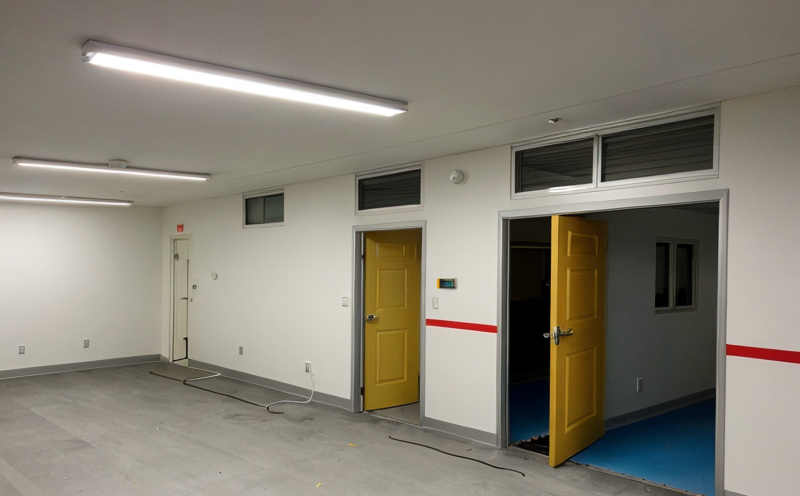NFPA 101 Life Safety Code Testing of Emergency Lighting Installations
The National Fire Protection Association (NFPA) Life Safety Code, specifically NFPA 101, is a widely recognized standard that focuses on the safety and health of individuals in buildings. One critical aspect addressed by this code pertains to emergency lighting installations. These systems are designed to provide safe evacuation routes during emergencies such as fires or power outages. The testing of these installations ensures they meet rigorous standards set forth by NFPA 101, thereby enhancing public safety.
The testing process involves a series of detailed checks aimed at ensuring that the emergency lighting fixtures and associated systems are capable of functioning correctly under specified conditions. This includes evaluating the luminance, uniformity, and duration of illumination provided during an emergency situation. The tests also assess the integrity of the control systems used to activate these lights automatically when required.
Our laboratory adheres strictly to NFPA 101 guidelines for testing emergency lighting installations. We employ advanced instrumentation and methodologies that simulate real-world scenarios to accurately measure performance parameters. Our experienced technical staff ensures meticulous adherence to all relevant codes, including but not limited to ISO/IEC 17025 standards.
Testing typically involves several key steps:
- Installation verification
- Luminance and uniformity measurement
- Durability testing under various conditions (e.g., temperature fluctuations)
- Automatic activation testing
- System integrity checks
We provide comprehensive reports summarizing all test results, which are invaluable tools for maintaining compliance with regulatory requirements. By partnering with us, you gain access to cutting-edge facilities and expert knowledge dedicated exclusively to delivering accurate and reliable test outcomes.
| Test Parameter | Description |
|---|---|
| Luminance Measurement | Determines the brightness level of emergency lighting fixtures. |
| Uniformity Check | Evaluates whether light distribution is consistent across the designated area. |
| Durability Testing | Assesses how well the system performs under varying environmental conditions. |
| Automatic Activation Simulation | Verifies that the system can be activated automatically when needed. |
| System Integrity Assessment | Ensures all components work together seamlessly during an emergency scenario. |
The importance of accurate and thorough testing cannot be overstated. Non-compliance with NFPA 101 can lead to significant risks, including potential legal liabilities and compromised safety measures. By investing in regular inspections and maintenance through our services, organizations demonstrate their commitment to upholding high standards of care for occupants.
Our dedication to precision and reliability makes us the go-to choice for comprehensive emergency lighting testing. Partner with us today to ensure your facility complies fully with NFPA 101 regulations and remains safe in any crisis situation.
Scope and Methodology
The scope of our NFPA 101 Life Safety Code Testing extends beyond mere compliance checks; it encompasses a holistic approach aimed at enhancing overall safety measures within buildings. Our methodology is rooted in strict adherence to international standards such as ISO/IEC 17025, ensuring that each test conducted meets stringent quality assurance criteria.
To begin with, we conduct an initial site survey to understand the specific requirements and configurations of your emergency lighting system. Based on this information, tailored testing plans are developed for each project. During these tests, our technicians use specialized equipment capable of replicating actual emergency conditions, thus providing more accurate assessments of performance.
A typical test sequence includes:
- Inspection of all components including lamps, ballasts, and control panels
- Testing of individual luminaires to ensure they meet specified brightness levels
- Evaluation of the entire system’s ability to respond correctly upon activation
- Recording and analysis of test results using sophisticated software tools
The final step involves compiling detailed reports highlighting all findings alongside recommendations for necessary adjustments or improvements. These documents serve as valuable resources not only for current compliance but also for future planning purposes.
We pride ourselves on providing personalized services that cater specifically to the unique needs of each client. Whether you require periodic maintenance checks or one-off assessments, our team is equipped with the expertise needed to deliver exceptional results consistently across all projects undertaken.
Industry Applications
- Hospitals – Ensuring uninterrupted evacuation paths for patients and staff during emergencies.
- Data Centers – Maintaining critical operations by providing reliable illumination during power failures.
- Offices – Offering a safer working environment through dependable lighting systems in case of unexpected situations.
The primary goal of NFPA 101 Life Safety Code Testing is to protect lives and minimize injuries. By verifying that emergency lighting installations perform as intended, we help safeguard against potential hazards associated with inadequate illumination during crises.
| Key Benefits | Description |
|---|---|
| Enhanced Safety | Reduces risk of accidents and injuries due to poor visibility in emergencies. |
| Compliance Assurance | Avoids penalties and reputational damage resulting from non-compliance with regulatory requirements. |
| Operational Continuity | Maintains essential functions even when standard lighting fails, ensuring business continuity. |
| Potential Cost Savings | Prevents costly repairs or replacements by identifying issues early on through regular testing. |
Our services are designed to meet the diverse needs of various industries. From healthcare facilities where time is critical during evacuations, to data centers where downtime equates to significant financial losses, our expertise ensures that all necessary tests are carried out efficiently and effectively.
Environmental and Sustainability Contributions
- Energy Efficiency – Modern emergency lighting systems often incorporate energy-saving features like LED technology which reduces overall consumption when not in use.
- Reduction of Waste – By identifying faulty units early, unnecessary replacements are avoided leading to less electronic waste generation.
Incorporating sustainability practices into our testing protocols allows us to contribute positively towards reducing environmental impact while simultaneously enhancing operational efficiency. Our commitment extends beyond mere compliance; it involves proactive measures aimed at fostering a more sustainable future for all stakeholders involved.
Through rigorous adherence to NFPA 101 standards, we not only ensure immediate safety but also promote long-term sustainability goals by optimizing resource usage and minimizing waste generation throughout the lifecycle of emergency lighting installations.





